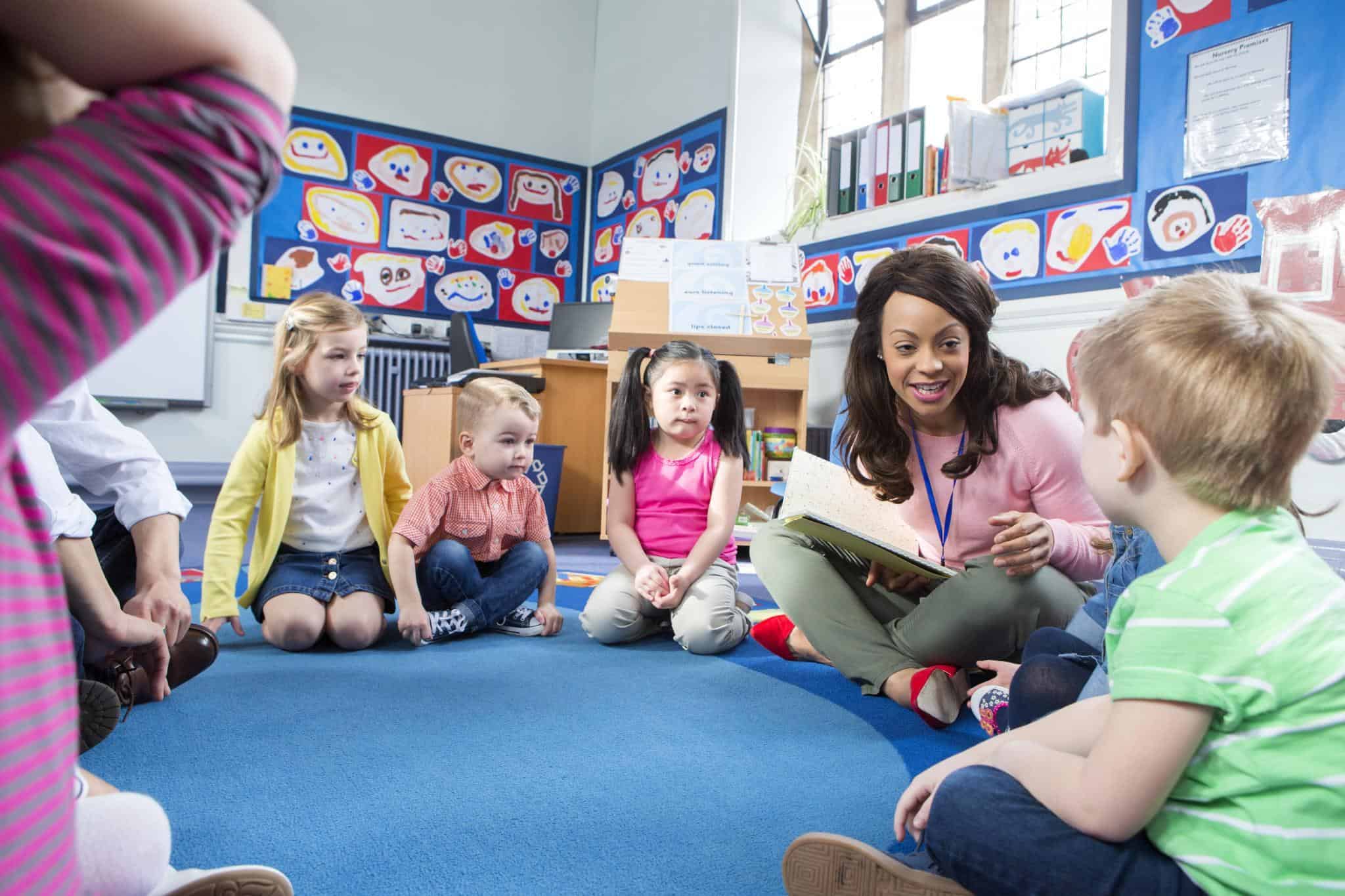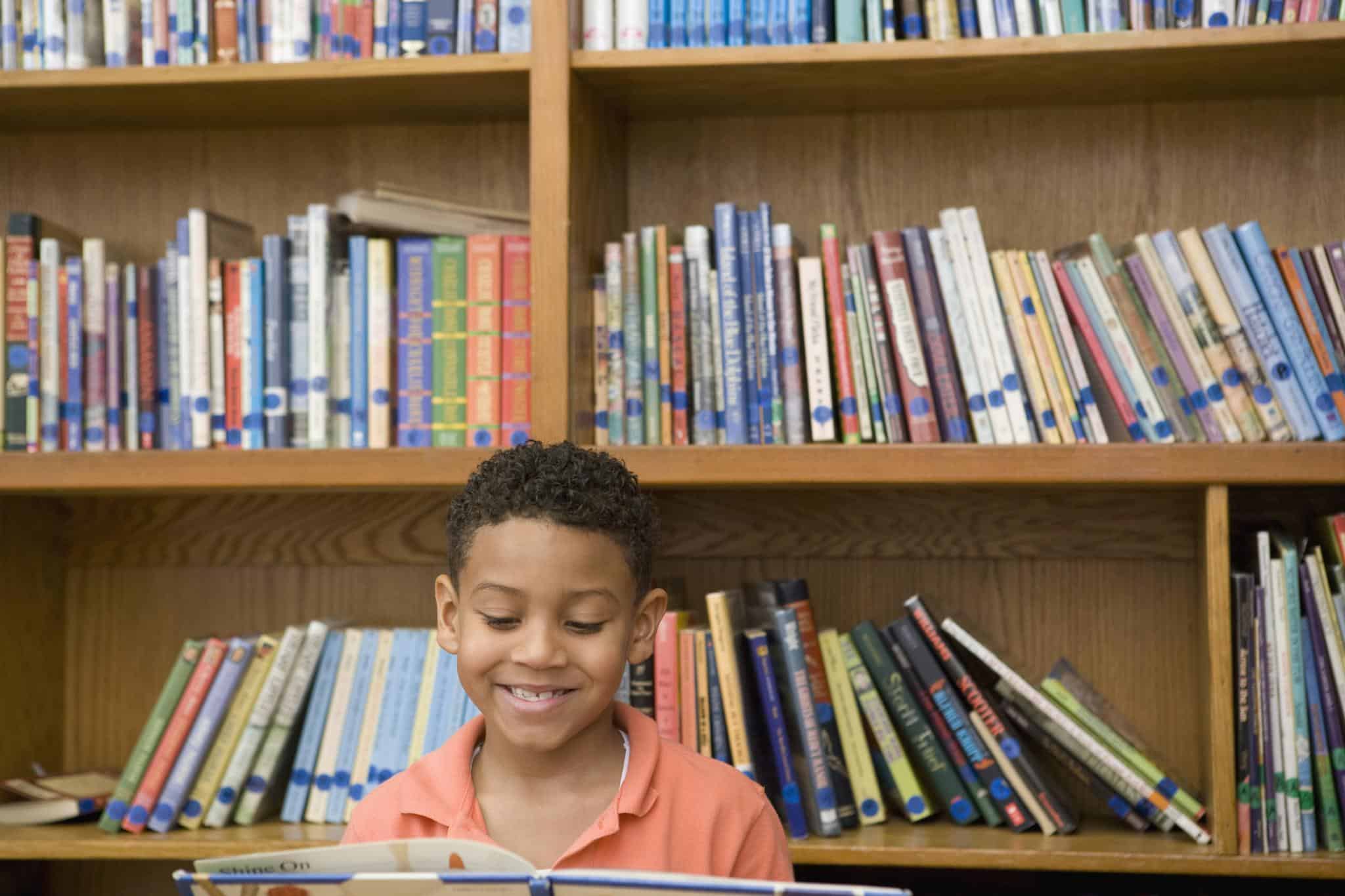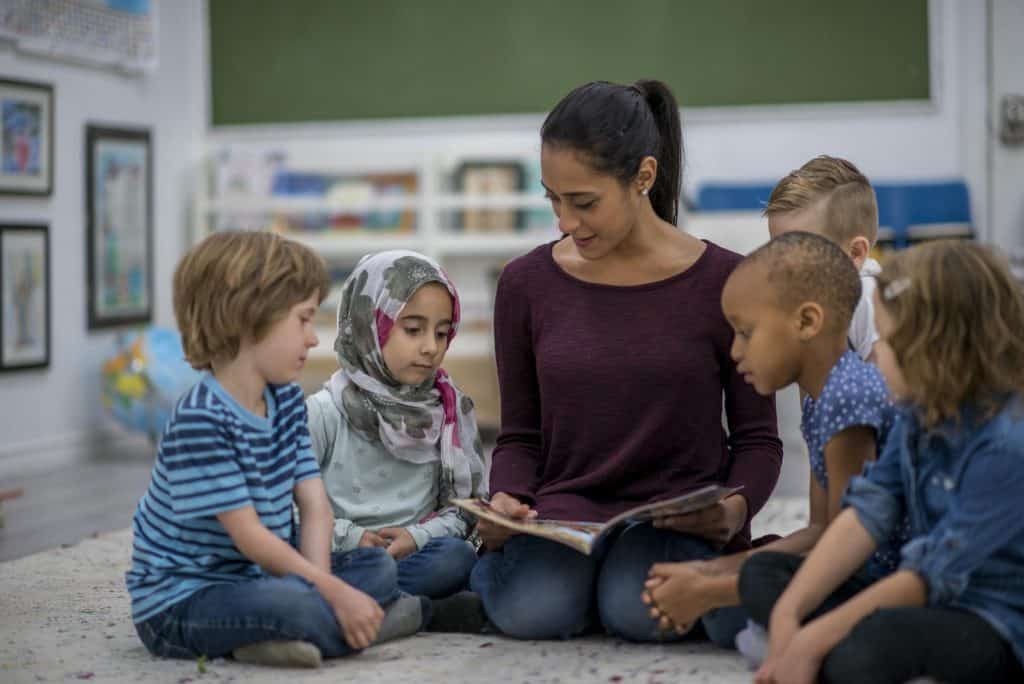 Because over fifty percent of people know at least two languages, educators are more likely to have bilingual students than not.[1] In fact, the number of bilingual people in the U.S. is at an all-time high–about 64.7 million people ages five and up speak more than one language fluently.[2] For this reason, it’s important to not only know how to reach these students but to debunk stereotypes surrounding bilingual education.
Because over fifty percent of people know at least two languages, educators are more likely to have bilingual students than not.[1] In fact, the number of bilingual people in the U.S. is at an all-time high–about 64.7 million people ages five and up speak more than one language fluently.[2] For this reason, it’s important to not only know how to reach these students but to debunk stereotypes surrounding bilingual education.
A common belief among teachers, for example, is that bilingual students have a harder time learning to read than students who only know one language. Yet all research points to the exact opposite–not only that, but bilingual students pick up certain pre-reading skills faster than their monolingual classmates. In fact, bilingualism is associated with many other cognitive benefits like stronger multitasking skills, creativity, and working memory.
Read on to discover the science behind literacy development and why it puts bilingual students at an advantage. Then, learn strategies to help bilingual students use their strengths to develop biliteracy.
Understanding the Stages of Reading Development
While students usually aren’t taught how to read until kindergarten, their path to literacy starts much earlier. According to Dr. Nell Duke, an early literacy researcher at the University of Michigan, language and literacy development may even begin before children are born–reading to babies in the womb “does seem to have some sort of… a positive memory or association” with reading.[3] Through infancy, children begin experimenting with language by making nonsensical sounds and eventually forming words.[4] And although learning to talk might not directly involve reading, oral language is a key milestone for early literacy development.
Educational researchers have pinpointed several pre-reading skills that children can–and often should–develop before they start reading at four or five, including:
- Learning new vocabulary words
- Phonological awareness, or the ability to distinguish sounds from one another
- Listening comprehension
- Knowing what books are and how to hold them
- Blending sounds into complex words (e.g. “run” + “ning” = running)
You can think of these reading readiness skills as the building blocks of literacy, or metalinguistic skills. Metalinguistics is the understanding of a language’s structure on a verbal and, eventually, written level. Without a strong understanding of how to speak and understand a language on this level, students cannot learn how to read.
Traditionalists often discourage parents of young children from teaching their students anything connected to reading until kindergarten. But students are already learning pre-reading skills on their own and can benefit greatly from instruction. Parents and teachers can help young children develop these skills in a variety of age-appropriate ways, from reading aloud to teaching students a new word every day.
How Bilingualism Puts Emergent Readers at An Advantage
To fully grasp the benefits, it’s important to understand what we’re talking about when we say “bilingual.” The definition of bilingual is a person fluent in two or more languages. From there, bilinguals can fall into two categories: simultaneous and sequential. Simultaneous bilinguals begin learning two languages from birth or before age three, and sequential bilinguals learn a second language later on. Both subsets suffer from the misunderstanding that knowing two languages makes learning to read difficult.
 But one of the key advantages of being bilingual is actually literacy acquisition, and the reason ties back to metalinguistics. Bilingual students develop metalinguistic skills at an earlier age than most other children.[5] Linguists believe that because they’re exposed to multiple languages at a young age, they’re better equipped to pick up on word structure. This can help bilingual students develop phonological awareness skills, an essential pre-reading ability, faster than their peers.
But one of the key advantages of being bilingual is actually literacy acquisition, and the reason ties back to metalinguistics. Bilingual students develop metalinguistic skills at an earlier age than most other children.[5] Linguists believe that because they’re exposed to multiple languages at a young age, they’re better equipped to pick up on word structure. This can help bilingual students develop phonological awareness skills, an essential pre-reading ability, faster than their peers.
A higher vocabulary range is another benefit of bilingualism that plays into literacy development.[6] Bilingual students are usually exposed to more words in both languages than children who only speak their native language. For this reason, they’re more likely to learn the equivalent of any word they pick up in the opposite language. Because they’re already familiar with more of their vocabulary words, spelling words and learning the alphabet comes more naturally. Plus, they’ll be predisposed to spelling more complex vocabulary words in later grades.
How prevalent these reading advantages are depends on several factors, especially how similar the languages a bilingual student speaks are. A student who speaks both Spanish and Portuguese, for example, will pick literacy up faster in either language than a student who speaks Chinese and English. These benefits will also usually be more prominent if the student has a strong, though not necessarily equal, grasp on both languages. Any level of bilingualism, however, can strengthen a student’s vocabulary range and metalinguistic ability.[7]
More Cognitive Benefits of Being Bilingual
Although early linguists thought second language acquisition caused developmental delays, contemporary research shows that this couldn’t be further from the truth.[8] In school and beyond, bilingual students are equipped with many unique strengths. For example, bilingual students usually have stronger working memories and attention spans.[9] These skills alone can lead to both academic and behavioral gains as well as a stronger learning environment in your classroom.
Bilingual students also outperform monolingual students on tasks that require executive control.[10] This refers to self-discipline, perseverance, and other skills that help students achieve their goals. When combined with the higher abstract thinking skills these students develop, bilingual students often have the intellect and motivation to take on complex school assignments.[11]
And the advantages don’t stop at academic achievement. Bilingual people exhibit more creativity than monolingual counterparts, which can bring as much fulfillment as it does success. They’re also better at multitasking and conflict resolution, skills that benefit others as much as themselves.[12,13] Best of all, bilingualism is linked to a reduced likelihood for cognitive decline later on.[14] The cognitive benefits of bilingualism support students throughout their entire lives, from birth to old age.[15]
In a nutshell, advantages of being bilingual include heightened:
- Executive thinking skills
- Working memories and attention spans
- Abstract thinking skills
- Multitasking
- Conflict resolution skills
When it comes to simultaneous vs sequential bilingualism, both experience similar effects. While simultaneous bilinguals have these benefits longer, sequential bilinguals pick them up quickly while learning a second language. The cognitive benefits also transcend socioeconomic status or other cultural factors, suggesting that any level of bilingualism is profoundly positive.
Why Bilingual Students Need to Learn Biliteracy, Too
 “Literacy and language,” according to early reading professor Dr. Nell Duke, “always develop in a cultural space.”[16] Bilingual students are able to develop stronger literacy skills if they can learn to read in both languages they speak. In a meta-analysis of teaching bilingual students to read, no studies found English-language only literacy education to be superior and the majority saw greater gains in bilingual classrooms.[17]
“Literacy and language,” according to early reading professor Dr. Nell Duke, “always develop in a cultural space.”[16] Bilingual students are able to develop stronger literacy skills if they can learn to read in both languages they speak. In a meta-analysis of teaching bilingual students to read, no studies found English-language only literacy education to be superior and the majority saw greater gains in bilingual classrooms.[17]
The reason for this is best explained when defining biliteracy. Biliteracy is the ability to read and write in two or more languages. Although it may sound strange, it’s entirely possible for a student to be bilingual but not biliterate. While language development in young children gives them the metalinguistic skills, they might not learn the spelling or grammatical rules of a language on their own.
But because many reading skills are transferable, students who learn to read in both languages develop stronger literacy gains.[18] The more lessons they receive in phonological awareness, vocabulary memorization, and other metalinguistic skills in both languages, the faster they’ll learn to read. Without proper instruction, however, their literacy in one language may become stunted or even nonexistent.
For an average teacher who doesn’t teach in a dual-immersion classroom, however, knowing where biliteracy fits into your curriculum can be tough. But monolingual teachers can find ways to foster biliteracy for their multilingual students. Even small things, like teaching bilingual students vocabulary words or assigning books in both languages that they speak, can help them become biliterate.[19]
How to Help Bilingual Students Gain Reading Fluency
Bilingual students can not only learn to read as well as their monolingual peers but even surpass them. You can take steps as an educator to help them develop pre-reading skills, especially if you’re teaching a predominantly bilingual classroom.
Here are a few fun reading activities and tips made with bilingual learners in mind:
- Thematic spelling units can be especially useful for bilingual students. You could, for example, have an animal unit with words like “bear” and “dog” to help bilingual students contextualize new vocabulary words[20]
- In addition to classroom instruction, offer one-on-one tutoring and take-home library books to strengthen any weaknesses and promote parent engagement[21]
- If possible, give students reading assignments in their native and second language. Bilingual students learn to read faster if they’re able to develop biliteracy[22]
- Consider any major differences between the student’s native language and the language spoken in class if they are different. If your student’s native language is Russian, for example, you might spend extra time helping them learn to write the English alphabet[23]
- Once your students have developed core literacy skills, have them practice reading aloud to a partner. Not only will students be able to correct each other’s mistakes, but they may feel more confident reading with a peer[24]
Sources:
Ansaldo, A. I., Marcotte, K., Scherer, L., & Raboyeau, G. Language therapy and bilingual aphasia: Clinical Implications of psycholinguistic and neuroimaging research. Journal of Neurolinguistics, 2008, 21, 539-557.[1]
Language Magazine. Bilingualism on Steep Rise in U.S. Retrieved from languagemagazine.com: https://www.languagemagazine.com/2016/12/09/bilingualism-steep-rise-u-s/.[2]
Jacobs, L., and Duke, N.K. Pre-K Comprehension Development & Instruction for Ed Equity and Learning. EduTalk Radio, August 2018.[3]
National Association for the Education of Young Children (NAEYC). Learning to Read and Write: What Research Reveals. Retrieved from readingrockets.org: http://www.readingrockets.org/article/learning-read-and-write-what-research-reveals.[4]
Marian, V., and Shook, A. The Cognitive Benefits of Being Bilingual. Cerebrum Magazine, October 2012, 13.[5]
Blom, E., Küntay, A.C., Messer, M., Verhagen, J, and Leseman, P. The benefits of being bilingual: Working memory in bilingual Turkish–Dutch children. Journal of Experimental Child Psychology, December 2014, 128, pp. 105-19.[6]
Gambi, C. Learning to read: does being bilingual help or hinder? Retrieved from http://www.bilingualism-matters.ppls.ed.ac.uk: http://www.bilingualism-matters.ppls.ed.ac.uk/learning-read-bilingual-hinder/.[7]
Barac, R., and Bialystok, E. Cognitive development of bilingual children. Language Teaching Journal, January 2011, 44(1), pp. 36-54.[8]
Adescope, O.O., Lavin, T., and Thompson, T. A Systematic Review and Meta-Analysis of the Cognitive Correlates of Bilingualism. Review of Educational Research, June 2010, 80(2).[9]
Bialystok, E. Reshaping the mind: The benefits of bilingualism. Canadian Journal of Experimental Psychology, 2011, 65(4), pp. 229-35.[10]
Barac, R., and Bialystok, E. Cognitive development of bilingual children. Language Teaching Journal, January 2011, 44(1), pp. 36-54.[11]
Irujo, S. What Does Research Tell Us About Teaching Reading to English Language Learners? Retrieved from readingrockets.org: http://www.readingrockets.org/article/what-does-research-tell-us-about-teaching-reading-english-language-learners.[12]
Bialystok, E., and Craik, F.I.M. Cognitive and Linguistic Processing in the Bilingual Mind. Current Directions in Psychological Science, March 2012, 19(1).[13]
Ibid.[14]
Irujo, S. What Does Research Tell Us About Teaching Reading to English Language Learners? Retrieved from readingrockets.org: http://www.readingrockets.org/article/what-does-research-tell-us-about-teaching-reading-english-language-learners.[15]
Barac, R., and Bialystok, E. Cognitive development of bilingual children, pp. 36-54.[16]
Jacobs, L., and Duke, N.K. Pre-K Comprehension Development & Instruction for Ed Equity and Learning. EduTalk Radio, August 2018.[17]
Bialystok, E., McBride-Chang, C. and Luk, G. Bilingualism, Language Proficiency, and Learning to Read in Two Writing Systems. Journal of Educational Psychology, 2004, 97(4), pp. 580-590.[18]
Ibid.[19]
Colorín Colorado. Reading in Kindergarten. Retrieved from colorincolorado.org: http://www.colorincolorado.org/article/reading-kindergarten.[20]
Slavin, R.E., and Cheung, A. How Do English Language Learners Learn to Read? Retrieved from reasearchgate.net: https://www.researchgate.net/profile/Alan_Cheung2/publication/246389232_How_Do_English_Language_Learners_Learn_to_Read/links/549953520cf21eb3df5fbc7b/How-Do-English-Language-Learners-Learn-to-Read.pdf.[21]
Bialystok, E., McBride-Chang, C. and Luk, G. Bilingualism, Language Proficiency, and Learning to Read in Two Writing Systems, pp. 580-590.[22]
Hartano, A., and Yang, H. Disparate bilingual experiences modulate task-switching advantages: A diffusion-model analysis of the effects of interactional context on switch costs. Cognition, May 2016, 150, pp. 10-19.[23]
Campbell, R., and Sais, E. Accelerated metalinguistic (phonological) awareness in bilingual children. Developmental Psychology, March 1995, 13(1), pp. 61-68.[24]

